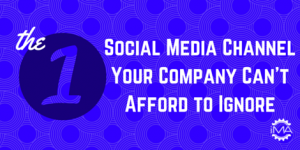— June 11, 2019
Marketers really learn a target market inside and out by developing personas and customer journey stages, which help to further explicate who the audience really is. A lot of critical questions get their answer by doing this preliminary work: Where does the customer get information? What does he or she aspire to? What hesitations do they have before making a purchase? If brand messaging and customer experience don’t meet all of a customer’s needs, a consumer will have no problem finding someone who does.
Deliver exceptional customer experience
Customer experience is all about understanding what your target market wants and needs, and then delivering an exceptional relationship. It goes beyond the product, your competitive advantage, and marketing tactics. Customer experience is about knowing the friction points and not only fixing them but turning them into something enjoyable.
Start with your business model
Customer experience begins with your business model—the plan that applies overall strategy to the buying process, distribution model, pricing structure, and so much more. We can look at Brita, the home water filtration products company, as a good example.
Brita follows the “Razor Blades” business model, in which a consumer buys one piece of equipment and is required to buy repeat replacement parts. Brita makes pitchers and faucet add-ons that filter tap water and remove contaminants like lead and chlorine—but notice that most people didn’t have a problem with drinking tap water until a device came along that could deliver “cleaner water” without asking customers to lug home heavy bottles from the store. In addition, the Brita pitcher is simple to use and doesn’t demand significant effort or time. The filters also alert customers when the time has come for replacements, which are of course readily available online and in-stores.
From end to end, Brita makes it easy to implement this new device into your daily routine. Any business model should try to hit the right combination of quality, necessity, ease, and compelling branding.
What kind of business model are you?
There are many types of business models, and each has a distinct purpose. Think of some of the most recognizable brands like Apple, McDonald’s, and Target. Could you identify their business models and why they work for them? Some common business models are franchise, retailer, distributer, and subscription, but a lot of businesses don’t fit into one model, making them more of a hybrid. Take Trader Joe’s, for example, which is a retailer that relies on private labels rather than stocking big brands. Their distinct customer experience allows them to stock unique goods and keep options simple for customer.
This infographic from Fundera explains 12 common business models—using coffee metaphors. Sounds funny, I know, bit it helps to illustrate how each one reaches its customers. As a marketer, understanding how your business model operates is critical to understanding how customers interact with your brand (as well as your competitors, for that matter).
The following graphic is courtesy of www.fundera.com.
![12 Business Models Explained—Using Coffee Metaphors [Infographic] 12 Business Models Explained—Using Coffee Metaphors [Infographic]](https://www.onlinesalesguidetip.com/wp-content/uploads/2019/06/12-Business-Models-Explained—Using-Coffee-Metaphors-Infographic.png)
Digital & Social Articles on Business 2 Community
(60)
Report Post






